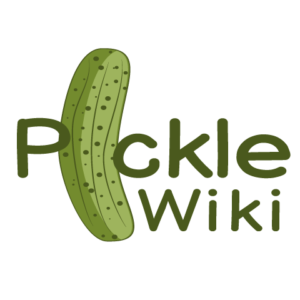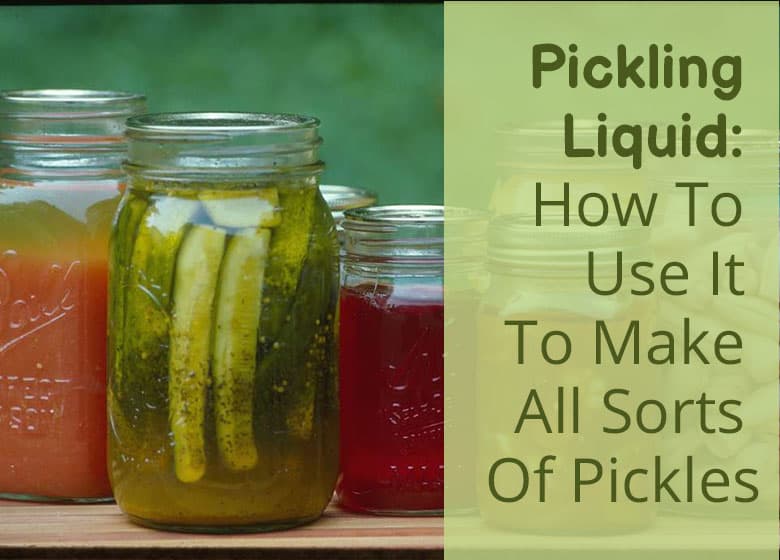Most people will be surprised to find out that you can pickle almost anything. Even if the results aren’t necessarily the best tasting, the process will work on many types of fruits and vegetables as well as meat and eggs. Understanding what pickling liquid is and how it works means that you can use it to make all sorts of different types of pickles.
A basic pickling liquid will consist of a one-to-one ratio of vinegar and water plus salt and sugar as necessary. You can adapt this recipe with different aromatics, spices, and herbs to create your own pickling recipes.
We will explain how the pickling process works, why it works, and the fundamentals you need to know to create your own recipes to make all sorts of different types of pickles.
What is Pickling Liquid?
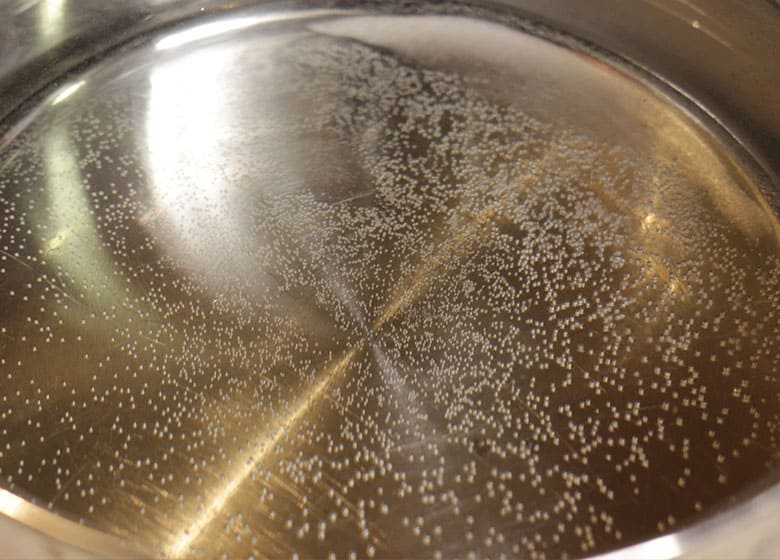
Pickling originated in India centuries ago but subsequently spread to all different regions, cultures, and geographies. Pickling food is a way to preserve fresh fruits, vegetables, eggs, and even meat. Preserving food by pickling has been around for thousands of years.
To preserve foods by pickling, the surface of the food is surrounded by a brine or vinegar solution. ScienceDirect.com says that liquids with high amounts of salts, vinegar, or oil can kill bacteria or other microorganisms that can spoil food.
By achieving an acidity level of a pH of 4.6 or lower or a salt solution of 10% or higher, the environment will be inhospitable to many different types of bacteria or microorganisms. However, this environment also impacts the taste and texture of the food that you are attempting to preserve. The key to good-tasting pickles is to make sure that the food you are pickling is at its best taste and texture.
In some pickling recipes, you may not even need to add water. By sufficiently salting the vegetable, like cabbage for sauerkraut, the salt will extract a sufficient amount of moisture from the vegetable to create its own pickling liquid.
However, other vegetables that don’t have sufficient moisture, water, or vinegar are sometimes added to ensure the surface of the food is properly surrounded while it’s stored.
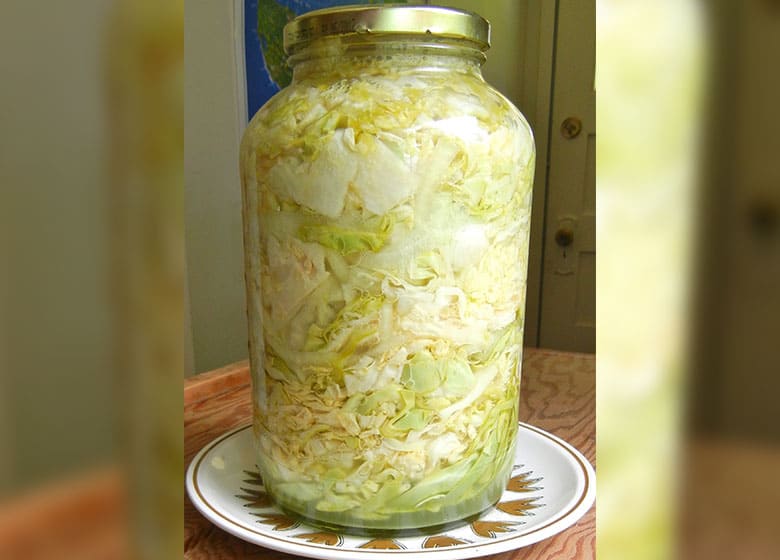
There are Differences Between Brine vs Vinegar Pickling
There are two different methods of pickling, either a brine pickling method or a vinegar-based method. Even pickled cucumbers may utilize different methods. For example, Kosher pickles typically utilize the vinegar method while dill pickles typically use the brine method. To make a vinegar pickling liquid you will need a one-to-one ratio of vinegar to water. To pickle using the brine method, you will need a salt solution.
Vinegar Pickling Liquid
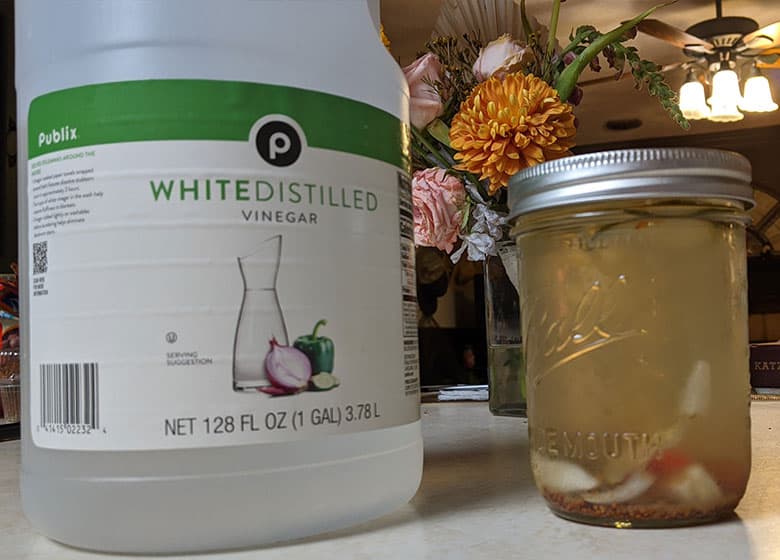
Pickling foods with the vinegar method encourages the growth of good bacteria, called lactobacillus, to prevent spoilage. By fermenting the food with a specific recipe, this good bacteria will grow instead of bad.
Kimchi and dill pickles are the most commonly known types of fermented pickles. The fermentation process slows down the decaying process of the food, preserving the taste and texture for much longer than without pickling.
With most recipes that require making a liquid to surround the fruit or vegetable, you’ll need to start with a one-to-one ratio of water and vinegar care. As long as the vinegar has an acidity level of greater than 5% then you can mix and match the different types of vinegar with the water that you use in your solution. Many different types of wine vinegar may have a lower acidity than 5% which could jeopardize the longevity of your recipe.
Brine Pickling Method
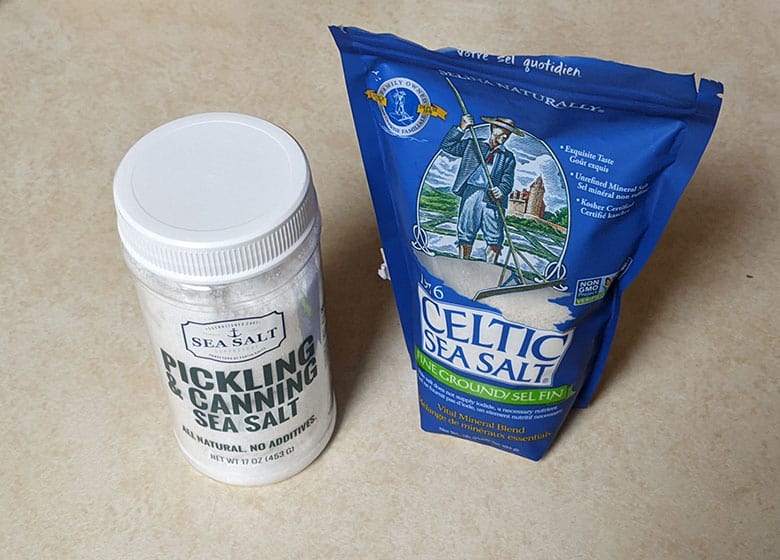
The brine method increases the saltiness of the solution such that fermentation starts to occur. Sauerkraut and kimchi are two pickles that are made from the brine method.
Survival-Manual.com says that there are several ways to make sure your brine is salty enough. One method includes testing to see if an egg will float; if it doesn’t then you need to keep adding salt to your saltwater solution. Another, more quantitative method, is to measure a four-to-one ratio of water to salt, which results in a salt solution of 10%, higher than most bacteria can tolerate.
Some recipes will only need salt in order to achieve a pickle, such as Mediterranean pickled lemons. In this style of recipe, the fresh fruit or vegetable is packed with so much salt that over time the juice from the fruit or vegetable is extracted to create the pickling brine that will surround the fruit or vegetable for weeks or months to come.
How to Use Pickling Liquid
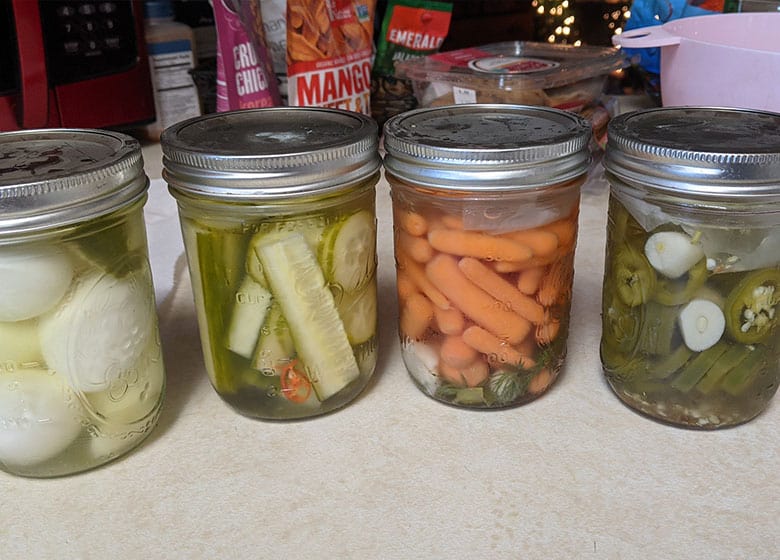
With any pickling recipe, you will need to make sure that your pickling liquid completely surrounds and submerges the fruit or vegetable, or other food that you are trying to pickle. This method of preservation works by immersing the entire surface area of the food with a high salt content or high acidity liquid.
Without sufficient coverage, the food could spoil instead of pickling. For example, if you are pickling cucumbers, if the tips of the sphere stick above the pickling liquid, these ends could end up spoiling. At the very least they wouldn’t have the same flavor as the rest of the spear.
There are two methods for preserving pickled foods.
- Refrigerator Pickles: After covering your soon-to-be pickled food with the brine or vinegar solution, you play food jars or containers into the refrigerator to keep for several weeks to a month. This often results in the fastest pickled recipes.
- Canned Pickles: Canning pickles consists of submerging your containers of pickles in a hot water bath. This tiger’s eye special jar or can, such as a mason jar with a wax-sealed lid. The hot water bath reduces the volume of air in the can and heats up the wax seal so that no air can penetrate inside of the lid. Canning pickles this way will result in shelf-stable food that will last for many months to years.
To reduce the chance of infection and foodborne illnesses, some recipes will require that you sterilize your containers before you add your recipe. Sterilization can be done either by submerging the container in boiling water before filling it or using a food-grade sanitizer such as Star San, per the manufacturer’s instructions.
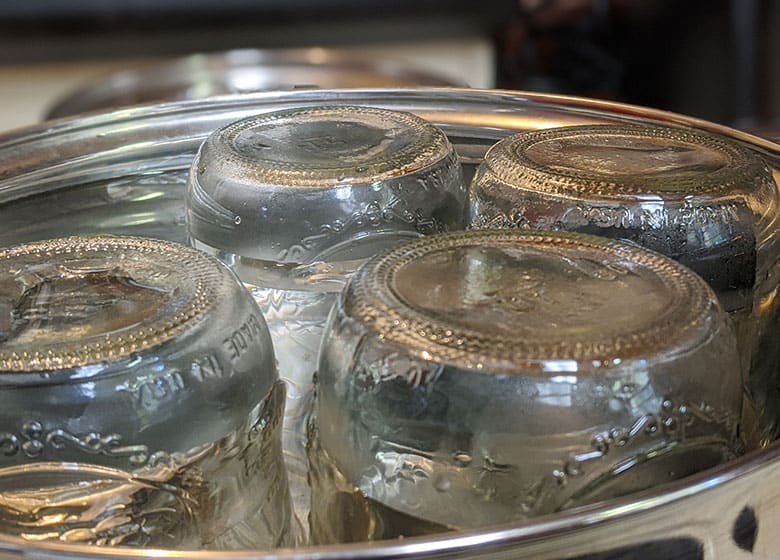
With most canning recipes you will not need to sterilize your jars before filling, as a hot water bath will raise the temperature of the jar and the contents high enough to kill off any bacteria within.
Some recipes may only recommend 10 to 15 minutes and a hot water bath, while other recipes may suggest up to an hour. Make sure that you follow the recipe’s instructions for how long your pickles decaf process.
Adapting Your Pickling Recipes
Pickling recipes will often be adopted with different types of flavors, spices, herbs, and ingredients. You have flexibility in the different types of vinegar that you use, different types of salt, adding sugar, or aromatics such as garlic, ginger, or onion. You can even add as many spices as you want such as basil, oregano, cinnamon, nutmeg, allspice, cardamom. The list goes on.
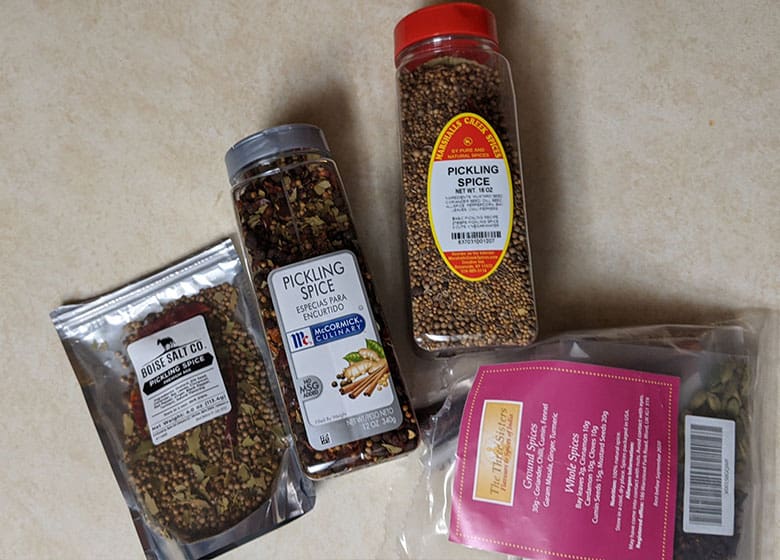
However, through the pickling process, you can add different aromatics to create different flavor profiles. Herbs such as rosemary or thyme can make a savory pickle, while other spices such as the cinnamon, nutmeg, or adding honey to the recipe can make it sweeter.
When adapting your pickling recipes, you need to consider the acidity and sodium content of the food that you’re trying to pickle. The texture of the food can also impact how you process your recipe, as well. Don’t be afraid to experiment, such as adding different spices to different small jars or containers, or processing each one in different ways. Just be careful to refrigerate any experimental recipes, to prevent contamination.
Different Kinds of Vinegar for Different Flavor Profiles
When using a vinegar-based pickling liquid, you can change up the types of vinegar to produce different flavors in your pickles.
PreserveandPickle provides a summary of different options and flavor profiles.
White Vinegar has a neutral flavor and color such that it won’t typically impact the overall taste and texture or color of your pickled food. There are some exceptions where there are chemical reactions, such as in red onions, that can accentuate the colors in your pickles.
Malt Vinegar has a bold flavor that can overwhelm delicately flavored doors and a dark color that can brown bright colors. malt vinegar should typically be used for strong-flavored pickles such as pickled meats or strongly fermented foods. Be careful with using this one.
Apple Cider Vinegar is lightly colored. Like other fruit vinegar, it will have a light fruity flavor that is good with many delicate pickle flavors. It has a slight yellow-orange tinge that might produce an overall brown color in your pickled, but many people don’t notice.
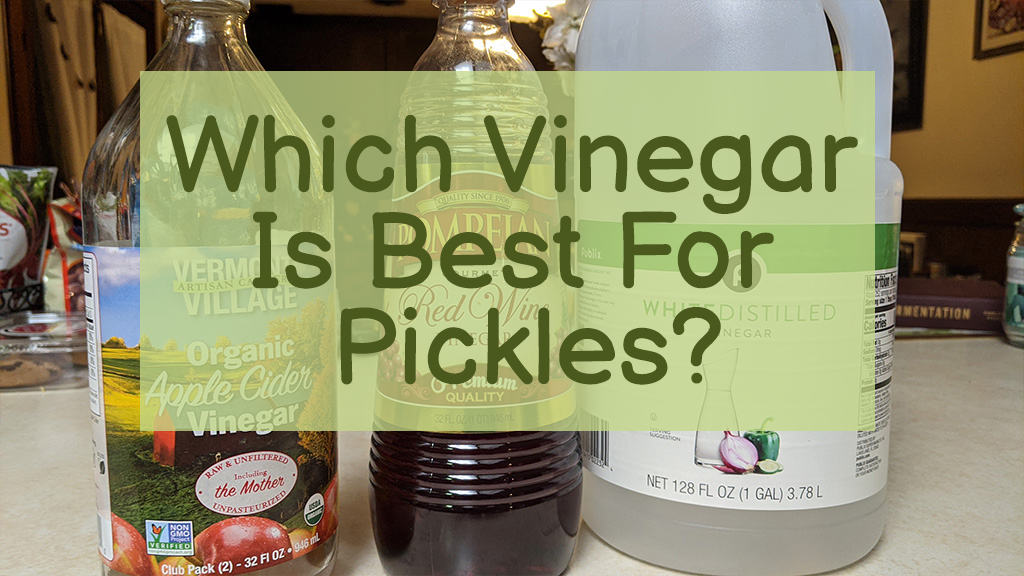
Wine Vinegar has a delicate flavor. White wine vinegar may not impact the color of your pickles, but the red will. Champagne vinegar may even be used with different types of fruit pickles due to its very mild flavor. However, you do need to be careful with your vinegar to make sure that the acidity levels are greater than 5% in the solution. Wine vinegar may be on the lower side, so be sure to read the bottle before assuming that your product will be sufficient.
Lastly, Balsamic vinegar is often used as a topping for salad dressings, vegetables, or dishes such as Caprese. However, it can also be used to impart a really special flavor in different types of pickles. Balsamic vinegar is very dark, so I can have an impact on the color of your pickles.
Pickling Storage and Food Safety
Before the invention of modern technology, there were all sorts of different types of food preservation techniques, including pickling and canning. Unfortunately, mishandling food or using improper techniques could lead to foodborne illnesses. While some foodborne illnesses might yield upset stomachs for a couple hours or days, it was not uncommon to have life-threatening diseases that came from poor food handling.
Make sure that you either properly can your pickles or store them in the refrigerator for the recommended amount of time. Make sure you follow your recipe’s instructions exactly. illnesses such as botulism can be almost undetectable. he may not be able to see the bacteria are microorganisms in your food or detect bad or foul odors that could indicate these illnesses.
Never take a risk when it comes to food safety and you and your family’s health.
Surprising Types of Pickles You Can Make
Centuries-old recipes for pickles include picked meats, such as fish, for preservation. However, with the advent of modern refrigeration, pickling practices have trended towards a preference for the flavors of pickles fruits, and vegetables. For example, soy sauce is produced from the fermentation of soybeans, while different types of fish sauce and hot sauce come from the fermentation of fish and peppers respectively.
If you didn’t realize that you could pickle fish, here is another list of different types of foods that you can pickle other than fruits and vegetables.
Pickled Avocados
Anyone that loves avocados might be tempted to cut one open and just reach for a spoon, however if you have some under-ripe avocados you might be able to pop them into a pickle brine to preserve them for a delicious snack in the future
Pickling avocados does not just preserve and for future consumption, they can also help turn these unripe avocados that were picked too early and too soft, delicious, toppings for tacos, salads, and other garnishes.
This recipe from TheKitchn.com says that you just need water, vinegar, sugar, salt, peppercorns, and hot pepper flakes to create this pickle recipe. You even only need just two hours before they’re ready for serving.
Pickled Squash
When suggested, pickling squash may seem pretty obvious considering that the most common type of pickle is a cucumber. Even though these vegetables are closely related, pickled squash is less common. However, the process is much the same. You may adapt the spices as needed to fit your personal taste or a future recipe.
Pickled Cherries, Grapes, Blueberries, and other Small Fruit
Pickling small fruits such as cherries, grapes, blueberries, or other small fruit can create this amazing sweet and sour syrup or garnish for both sweet and savory dishes. Depending on how you season the pickling liquid, you can steer the pickled fruit from savory to sweet.
In this recipe from Foragerchef.com, you just need the fruit, red or white vinegar, based on your preference, and sugar. While the recipe looks dangerously close to making a jam or jelly, the key difference is the vinegar, which will provide a tart or tangy flavor to your pickled fruit, but will also help extract more liquid from your fruits.
Pickled Shrimp
Pickled shrimp may have originated in Southeast Asia centuries ago, but in the United States, it is now known as being a common Southern Cuisine dish. Pickled shrimp is quite common. While the aromatics of the pickle will be reminiscent of Cajun Cuisines, Old Bay, lemon juice, and hot pepper flakes. Depending on the recipe and the opinion, the different spices may vary significantly.
Pickled Eggs
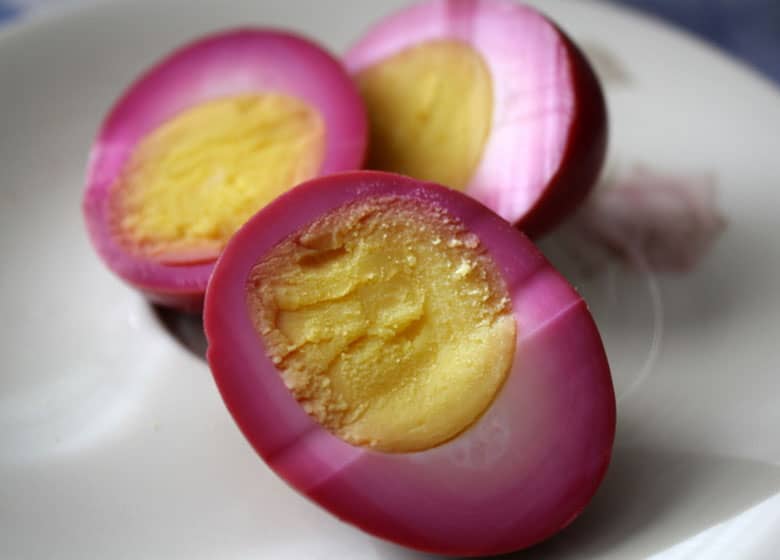
Pickling eggs could be inspired by a craving for a taste, but also a desire to dye your eggs in an edible fashion. A common way to pickling eggs includes a pickling liquid with beets, which dyes the eggs a bright fuchsia pink.
In this recipe from SimpleRecipes.com, the pickling recipe uses a one to one ratio of beet juice to apple cider vinegar, plus the addition of the beet, onions, cardamom, and anise. These eggs will be a bold color, and taste amazing with a bit of sugar to help cut the acidity.
In lieu of beets, you can also flavor your pickled eggs with jalapenos for a healthy kick, or other spices, such as curry or tarragon. Adding turmeric instead can yield yellow eggs instead of pink. If you want to serve up a colorful easter platter, try a range of different recipes for different colors!
Salt Pork and Other Pickled Meats
Brining meat in a salt solution is technically a form of pickling. Many preserved types of meat have been packed with salt to extract moisture, such as salted pork or aged meats. While in this method, the liquid may be non-existent or drained off as necessary, “pickled” meats are a reality!
The Chicago Tribune noted that corned beef is the perfect example of a “pickled” meat.
For a pickled meat recipe, you will need to start by placing the meat in a container and covering it with water. Then, you take the meat and start dissolving salt, about four to six cups as an estimate. The brine is ready once you can float an egg in the solution. Once the brine is ready, you can add aromatics such as bay leaf or thyme, then return the meat to the brine. Depending on the size of the chunk of meat, you may need one to two weeks until the meat is sufficiently pickled.
While most people won’t need to preserve the meat for months outside of a refrigerator, these pickling recipes can yield fantastic tasting results.
Most Popular Pickling Recipes
Even though pickled cucumbers are the most popular types of pickles, there are also some hugely popular pickling recipes that you may not even realize our pickles. We will summarize some of the most popular recipes (excluding cucumbers! )
Pickled Watermelon and Watermelon Rinds
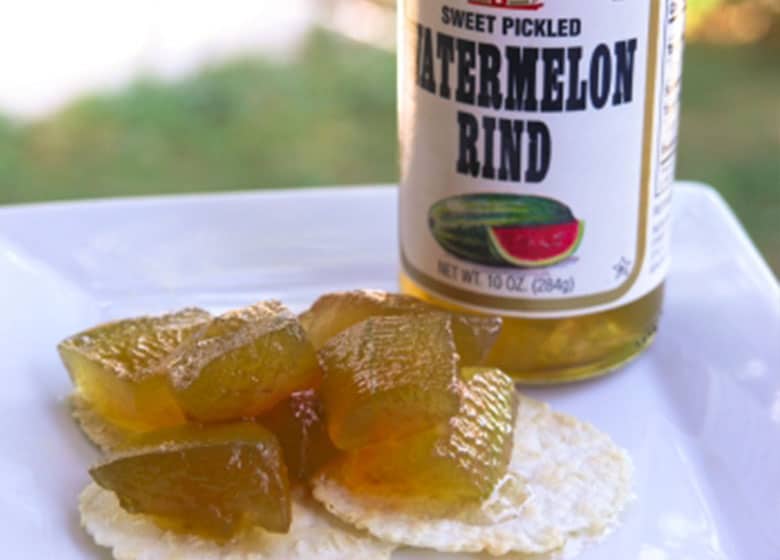
Pickled watermelon rinds can be found in many types of farm market stores and local grocers. While eating watermelon rinds doesn’t typically sound like a tasty snack, pickling these rinds will provide a soft, sweet, and spicy dish.
Alton Brown’s recipe here uses apple cider vinegar, allspice, sugar, ginger, star anise, and red pepper flakes for a spicy kick. This vinegar-based pickling recipe can be modified for refrigerator pickles or canning to be shelf stable.
The key here is an ice water bath. Since watermelon has soft flesh, if you pour hot pickling liquid over the watermelon rinds that have flesh still attached, the flesh could turn to mush. However, if you cut off the flesh (or eat it first!) then you won’t need to worry.
Pickled Jalapenos
For your next Taco Tuesday, consider putting together some pickled jalapenos to top your tacos, nachos, or salsa. These pickles are so delicious they can be eaten straight from the jar from the fridge.
GimmeDelicious.com has a recipe that claims to produce perfect pickled jalapenos in just ten minutes. To achieve the flavor so quickly, the sliced jalapenos are cooked in the pickling liquid slightly. After a few minutes of rest in the solution, they’re ready to eat! They can last in the refrigerator for a couple of months.
Sauerkraut
You may not have realized that your favorite Oktoberfest condiment is actually a pickle. As mentioned several times, sauerkraut is a type of pickle created by brining cabbage to ferment it into a pickle.
TheKitchn.com explains that to make sauerkraut, their recipe requires that everything is sanitized before starting, to make sure no stray bacteria gets into the storage containers.
In their recipe, you only need 1 and 1/2 tablespoons of salt to one head of cabbage. You will slice off the cabbage and pack it into a jar and generously coat it in salt. They say that you might be skeptical that 1 and 1/2 tablespoons will be enough to create your pickles. However, over time the salt will extract water from the cabbage and the volume of the cabbage would gradually reduce.
You may need to weigh down the cabbage to make sure that it stays submerged in its own liquid. If after a few hours there’s not enough pickling liquid to completely cover the cabbage, you may need to add more. However, within 3-10 days you should have perfect sauerkraut to top your bratwurst or schnitzel.
Pickled Beets
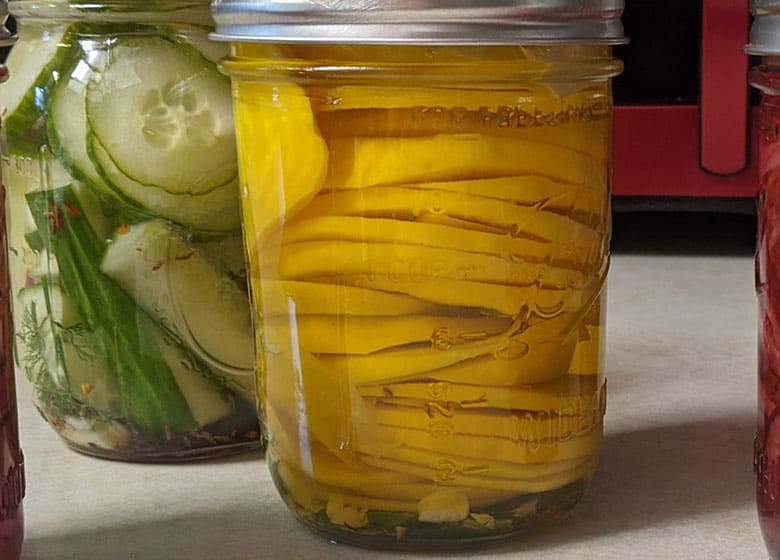
Beets might be a controversy whether you like them or think they taste like dirt, but pickling beets will yield an earthy, tangy dish that most people love. The best part of pickling beets is that most recipes are exceedingly simple – just a simple brine with additional sugar and spices to fit your palette.
This recipe from Bellyfull.net just adds mustard seeds and peppercorns to their basic pickling liquid, but you can experiment on your own.
While the beets can be pickled whole, you can also slice or shred them down for different forms for different meals or dishes you plan to create.
Pickled Onions
If you ever wanted an onion garnish with a slight flair, pickled red onions is the key. While most pickles retain their color when you use white vinegar, red onions turn a bright pink color when they’re pickled. They’re also the perfect balance between raw and cooked onions and provide an additional tang of acidity to your dish.
DetroitNews.com has a simple recipe that uses a simple pickle brine of salt, sugar, water, and apple cider vinegar. Pickling red onions is so easy you won’t blink an eye at keeping this in stock in your fridge. They’ll even be ready fast, with just an hour in the fridge before serving.
With one more reminder of safety, make sure that you either properly can your pickles or store them in the refrigerator for the recommended amount of time. Improper food storage can lead to foodborne illnesses such as
Kimchi Pickles
While kimchi is a name given to a large category of different styles of Korean pickled dishes, the most common one is pickled or fermented napa cabbage. Napa cabbage is fermented similarly to dill pickles or sauerkraut.
TheKitchn.com explains that during the first part of fermentation the salt water brine extracts water to kill off any bacteria in the cabbage. In the second part of fermentation, the Lactobacillus bacteria converts sugar into lactic acid which helps to preserve the cabbage.
Pickled kimchi cabbage starts with a basic brine recipe, but to give it the Asian flavors that you might be accustomed to, you will need to add ingredients such as fish sauce, ginger, and garlic. Make it spicy you also may need to include Korean red pepper. Daikon, or radish, is commonly added to the Cabbage during fermentation.
Pickling Liquid Can Be Used to Pickle Anything
Even though modern pickles may be monopolized by your typical cucumber pickles, by looking back into history you can find all sorts of unique recipes to pickle any sort of fruit, vegetable, meat, or eggs that you can consider.
Finding how pickling liquid works and how you can adapt it for different recipes, you can pickle almost anything that you want. Feel free to experiment with different recipes to determine what works for your taste buds.
Also, keep in mind that some flavors may continue to develop the longer they sit. If the pickles don’t taste the best after a couple of hours or couple days, leave them in the fridge for a couple more weeks before you do a final determination.
